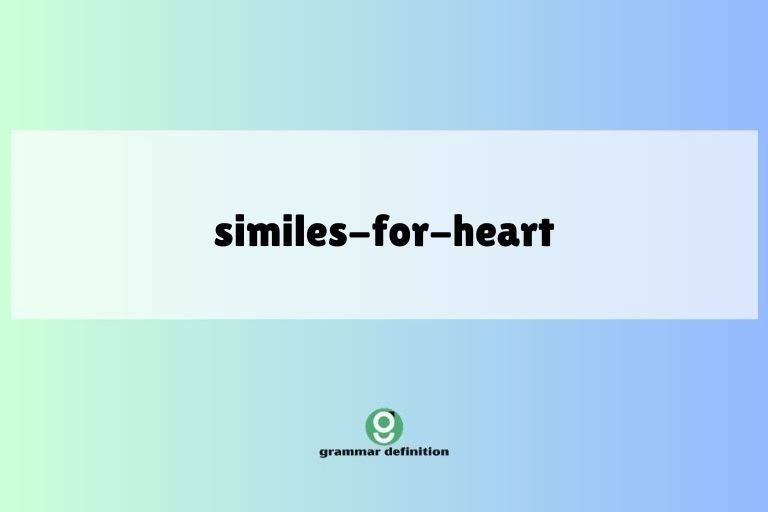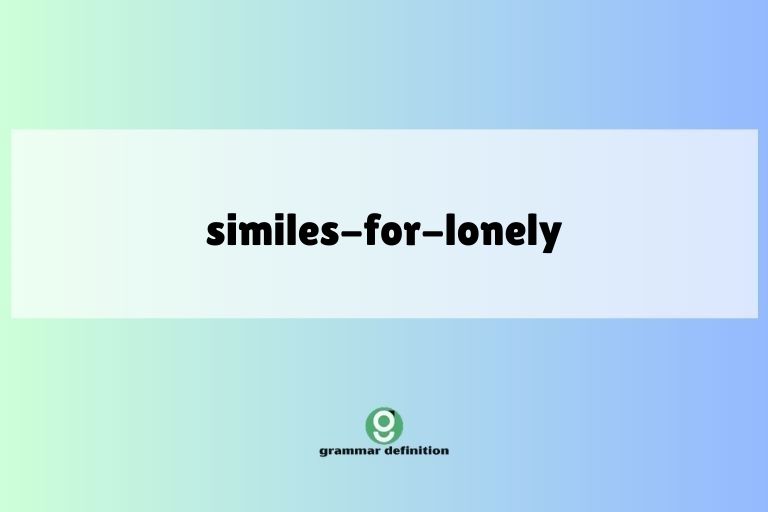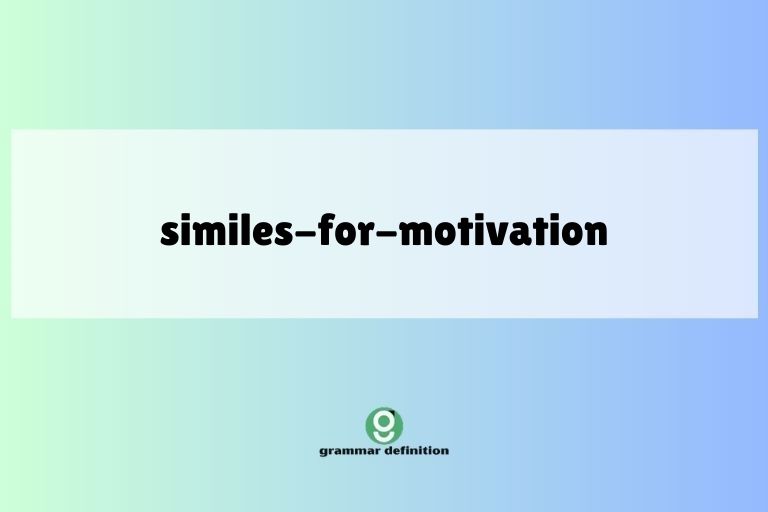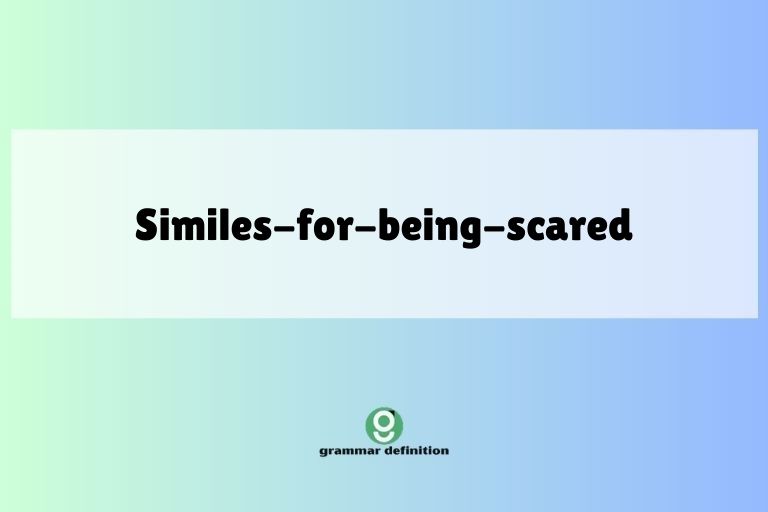Sun Similes: Illuminating Language with Figurative Speech
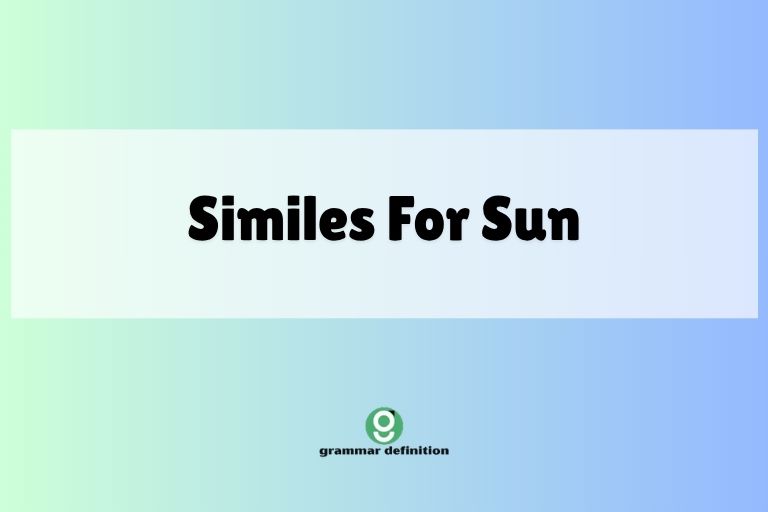
Similes are powerful tools in the English language that allow us to create vivid and engaging descriptions by comparing one thing to another using “like” or “as.” When it comes to describing the sun, a celestial body of immense power and beauty, similes can be particularly effective in capturing its various qualities, from its blinding brightness to its life-giving warmth. Understanding how to craft and interpret similes related to the sun enhances our ability to appreciate and utilize figurative language, enriching both our writing and our comprehension.
This article is designed for students, writers, and anyone interested in expanding their understanding of similes and their application in describing the sun.
This article will explore various similes for the sun, analyze their structures, and provide numerous examples to illustrate their usage. We will also delve into common mistakes to avoid and offer practice exercises to solidify your understanding.
Whether you’re a beginner or an advanced learner, this guide will provide you with the knowledge and tools to effectively use sun similes in your writing and conversation.
Table of Contents
- Introduction
- Definition of Simile
- Structural Breakdown of Sun Similes
- Types and Categories of Sun Similes
- Examples of Sun Similes
- Usage Rules for Sun Similes
- Common Mistakes with Sun Similes
- Practice Exercises
- Advanced Topics in Sun Similes
- Frequently Asked Questions (FAQ)
- Conclusion
Definition of Simile
A simile is a figure of speech that directly compares two different things using the words “like” or “as.” The purpose of a simile is to create a more vivid and imaginative description by highlighting the similarities between the two things being compared. Similes are essential in both poetry and prose, adding depth and color to writing. They help readers visualize and understand concepts more effectively by relating them to something familiar.
Similes are a type of figurative language, which means they deviate from the literal meaning of words to achieve a more impactful effect. Unlike metaphors, which imply a direct equivalence, similes explicitly state the comparison using “like” or “as.” This makes similes more straightforward and easier to identify. The effectiveness of a simile depends on the strength and relevance of the comparison; a well-chosen simile can transform a mundane description into something memorable.
In the context of describing the sun, similes can be used to convey its brightness, warmth, shape, color, and power. For instance, “The sun is like a giant spotlight in the sky” uses a simile to emphasize the sun’s intense brightness.
By using similes, writers can avoid generic descriptions and create a more engaging and evocative portrayal of the sun.
Structural Breakdown of Sun Similes
The basic structure of a simile consists of three main components: the subject (what is being described), the linking word (“like” or “as”), and the object of comparison (what the subject is being compared to). Understanding this structure is crucial for both creating and interpreting similes effectively. Let’s break it down further with examples related to the sun.
- Subject: This is the noun or pronoun being described. In the context of this article, the subject is usually “the sun” or a specific aspect of the sun, such as its light or heat.
- Linking Word: This is the word that establishes the comparison. It can be either “like” or “as.” The choice between “like” and “as” often depends on the specific phrasing and the desired rhythm of the sentence.
- Object of Comparison: This is the noun or phrase that the subject is being compared to. It should share a common characteristic with the subject to make the comparison meaningful. This could be anything from a physical object (e.g., a ball of fire) to an abstract concept (e.g., hope).
Here are some examples illustrating the structural components of sun similes:
- The sun (subject) is like (linking word) a giant furnace (object of comparison).
- The sun’s rays (subject) are as warm as (linking word) a comforting embrace (object of comparison).
- The sun (subject) shines like (linking word) a beacon of hope (object of comparison).
By understanding this basic structure, you can effectively create your own similes and analyze the similes used by other writers. The key is to choose objects of comparison that have a strong and relevant connection to the sun or its attributes.
Types and Categories of Sun Similes
Sun similes can be categorized based on the specific attribute of the sun they are meant to describe. These categories include brightness, warmth, shape, color, and power.
By understanding these different categories, you can choose the most appropriate simile to convey your intended meaning.
Similes Describing Brightness
Brightness similes focus on the intensity and luminosity of the sun’s light. These similes often compare the sun to other bright objects or sources of light, such as spotlights, diamonds, or stars.
They are used to emphasize the sun’s ability to illuminate and dazzle.
Similes Describing Warmth
Warmth similes highlight the heat generated by the sun. These similes often compare the sun to things that are known for their warmth, such as a furnace, a fire, or a comforting embrace.
They are used to convey the feeling of warmth and comfort that the sun provides.
Similes Describing Shape
Shape similes describe the physical form of the sun. These similes often compare the sun to round or circular objects, such as a ball, a sphere, or an orange.
They are used to provide a visual image of the sun’s appearance.
Similes Describing Color
Color similes focus on the hues associated with the sun, such as yellow, orange, and red. These similes often compare the sun to other objects that share these colors, such as gold, fire, or sunsets.
They are used to evoke the visual beauty of the sun’s colors.
Similes Describing Power
Power similes emphasize the sun’s immense energy and influence. These similes often compare the sun to powerful forces or entities, such as a god, a king, or a source of life.
They are used to convey the sun’s importance and dominance in the natural world.
Examples of Sun Similes
The following sections provide a variety of examples of sun similes, organized by category. Each table includes numerous examples to illustrate the different ways similes can be used to describe the sun.
Brightness Similes Examples
The table below presents examples of similes that describe the sun’s brightness. These similes use comparisons to other luminous objects to emphasize the sun’s intense light.
| Simile | Explanation |
|---|---|
| The sun is like a giant spotlight in the sky. | Emphasizes the sun’s focused and intense beam of light. |
| The sun shines as bright as a diamond. | Compares the sun’s brilliance to the sparkle of a diamond. |
| The sun is like a celestial beacon. | Highlights the sun’s role as a guiding light. |
| The sun’s rays are as sharp as shards of glass. | Conveys the piercing intensity of the sunlight. |
| The sun is like a burning star. | Emphasizes the sun’s fiery nature and luminosity. |
| It shone as bright as a welder’s torch. | Implies the sun is extremely bright and can be harmful. |
| The sun glared like a searchlight. | Suggests a direct, intense beam of light. |
| The sun was like a mirror reflecting light. | Implies intense reflection and brightness. |
| The sun shone like a newly polished coin. | Suggests a gleam and shine. |
| The sun was as bright as a camera flash. | Highlights a quick, intense burst of light. |
| The sun’s light is like a thousand candles burning at once. | Highlights the sun’s powerful and concentrated light output. |
| The sun is as bright as a supernova. | Compares the sun’s luminosity to an extremely bright astronomical event. |
| The morning sun shone like a freshly minted gold coin. | Highlights the sun’s gleam and value. |
| The sun’s glare was as intense as staring into a furnace. | Emphasizes the sun’s harsh and uncomfortable brightness. |
| The sun shone like a polished mirror. | Suggests a strong, reflective light. |
| The sun is as radiant as a bride on her wedding day. | Compares the sun’s brightness to the joy and radiance of a bride. |
| The sun’s rays are like golden threads weaving through the sky. | Highlights the sun’s intricate and beautiful light patterns. |
| The sun is as dazzling as a stage spotlight. | Emphasizes the sun’s ability to capture attention and illuminate. |
| The sun shone like a celestial firework. | Suggests a brilliant and explosive display of light. |
| The sun’s light is as clear as crystal. | Highlights the sun’s pure and unadulterated brightness. |
| The sun’s gleam is like that of a thousand stars combined. | Emphasizes the sun’s immense and collective light. |
| The sun is as luminous as a painter’s brightest highlight. | Compares the sun’s brightness to a particularly striking element in art. |
| The light from the sun sparkled like a river of molten gold. | Suggests the fluidity and value of the sun’s radiance. |
| The sun is like a lighthouse in the sky, guiding all below. | Emphasizes the sun’s guiding and protective role. |
| The sun’s radiance is as brilliant as a king’s crown. | Compares the sun’s brightness to the majesty and power of royalty. |
Warmth Similes Examples
The table below presents examples of similes that describe the sun’s warmth. These similes use comparisons to other sources of heat to emphasize the sun’s ability to provide warmth and comfort.
| Simile | Explanation |
|---|---|
| The sun is like a giant furnace in the sky. | Emphasizes the sun’s ability to generate intense heat. |
| The sun’s rays are as warm as a comforting embrace. | Compares the sun’s warmth to a feeling of comfort and security. |
| The sun is like a warm blanket on a cold day. | Highlights the sun’s ability to provide comfort and relief from the cold. |
| The sun’s heat is as intense as a desert fire. | Conveys the extreme heat of the sun. |
| The sun is like a natural heater. | Emphasizes the sun’s role in warming the environment. |
| The sun was like a warm breath on your skin. | Suggests a gentle and comforting heat. |
| The sun was as warm as a mother’s touch. | Implies the sun provides tender, affectionate warmth. |
| The sun felt like a heated stone. | Conveys a steady and grounding sense of warmth. |
| The sun’s rays were like a gentle hug. | Suggests affectionate and comforting warmth. |
| The sun’s heat was as intense as a blacksmith’s forge. | Highlights the high temperature. |
| The sun’s warmth is like a cup of hot cocoa on a winter evening. | Emphasizes the sun’s ability to provide comfort and relaxation. |
| The sun is as warm as a mother’s love. | Compares the sun’s warmth to a feeling of unconditional love and care. |
| The sun’s rays felt like a gentle kiss on my face. | Highlights the sun’s tender and affectionate warmth. |
| The sun is like a natural hot spring. | Emphasizes the sun’s ability to provide natural and therapeutic warmth. |
| The sun’s heat is as soothing as a warm bath. | Conveys the relaxing and comforting sensation of the sun’s warmth. |
| The sun is as comforting as a crackling fireplace. | Compares the sun to a source of warmth that provides relaxation and security. |
| The sun’s rays are like a warm embrace from an old friend. | Highlights the sun’s welcoming and comforting warmth. |
| The sun is as inviting as a sun-drenched beach. | Emphasizes the sun’s ability to create a warm and pleasant environment. |
| The sun’s heat is like a gentle fever, warming you from the inside out. | Suggests a deep and pervasive sense of warmth. |
| The sun’s warmth is as reliable as a faithful companion. | Compares the sun’s warmth to a consistent and dependable source of comfort. |
| The sun felt like a furnace blasting its heat. | Implies an intense and almost unbearable heat. |
| The sun was as scorching as the desert’s breath. | Suggests dry, intense heat. |
| The sun’s warmth was as enveloping as a thick woolen blanket. | Highlights the covering and protective nature of the heat. |
| The sun felt like a hot iron on bare skin. | Implies a burning, almost painful heat. |
| The sun’s rays were as toasty as the inside of an oven. | Emphasizes enclosed and high heat. |
Shape Similes Examples
The table below presents examples of similes that describe the sun’s shape. These similes use comparisons to other round or circular objects to provide a visual image of the sun.
| Simile | Explanation |
|---|---|
| The sun is like a giant ball of fire. | Emphasizes the sun’s spherical shape and fiery nature. |
| The sun is as round as an orange. | Compares the sun’s shape to a common round fruit. |
| The sun is like a golden sphere in the sky. | Highlights the sun’s shape and color. |
| The sun is as circular as a perfectly drawn compass. | Conveys the sun’s flawless roundness. |
| The sun is like a cosmic marble. | Emphasizes the sun’s smooth and spherical shape. |
| The sun was like a giant eye watching over us. | Suggests a large, round observer in the sky. |
| The sun resembled a coin in the sky. | Implies a flat, round shape. |
| The sun was as round as a balloon. | Conveys a large, inflated sphere. |
| The sun looked like a golden globe. | Suggests a radiant and spherical shape. |
| The sun was like a wheel in the sky. | Highlights the circular and rotating nature. |
| The sun is like a massive beach ball floating in the heavens. | Emphasizes the sun’s large size and round shape. |
| The sun is as round as a perfectly formed pearl. | Compares the sun’s shape to a valuable and smooth object. |
| The setting sun looked like a molten gold coin sinking into the horizon. | Highlights the sun’s shape and color as it sets. |
| The sun is like a celestial bubble, filled with light and energy. | Emphasizes the sun’s spherical shape and its contents. |
| The sun is as perfectly round as a child’s drawing of the sun. | Conveys the simple and recognizable shape of the sun. |
| The sun is as spherical as a gazing ball in a garden. | Compares the sun to a decorative and reflective object. |
| The sun looked like a colossal cherry in the bright blue sky. | Highlights the sun’s shape and color against the sky. |
| The sun is as uniformly round as a billiard ball. | Emphasizes the sun’s consistent and smooth shape. |
| The sun resembled a giant lollipop stuck to the sky. | Suggests a large, round object attached to the horizon. |
| The sun is like a radiant globe suspended in the cosmos. | Emphasizes the sun’s shape and its position in space. |
| The sun appeared as a huge, glowing tangerine in the sky. | Suggests a large, orange-colored sphere. |
| The sun was like a giant gumball stuck to the sky. | Implies a round, colorful and playful shape. |
| The sun appeared as a perfect sphere of heat and energy. | Highlights the roundness combined with its nature. |
| The sun was as circular as the face of a clock. | Suggests a perfect, well-defined circle. |
| The sun looked like a shimmering disc in the morning sky. | Emphasizes its flat, round appearance. |
Color Similes Examples
The table below presents examples of similes that describe the sun’s color. These similes use comparisons to other colorful objects to evoke the visual beauty of the sun’s hues.
| Simile | Explanation |
|---|---|
| The sun is like liquid gold in the sky. | Emphasizes the sun’s golden color and fluidity. |
| The sun is as yellow as a ripe lemon. | Compares the sun’s color to a common yellow fruit. |
| The sun is like a fiery orange in the heavens. | Highlights the sun’s orange color and intensity. |
| The setting sun is as red as a burning ember. | Conveys the deep red color of the sun at sunset. |
| The sun is like a splash of saffron in the morning sky. | Emphasizes the sun’s vibrant yellow-orange color. |
| The sun was like a drop of amber in the sky. | Suggests a warm, golden-brown color. |
| The sun glowed as red as a ruby. | Implies a deep, vibrant red color. |
| The sun was like a yolk in the sky. | Conveys a rich, yellow color. |
| The sun was as golden as a field of wheat. | Suggests a warm, natural gold color. |
| The sun looked like a copper coin. | Highlights a metallic, reddish-brown hue. |
| The sun is like a giant marigold blooming in the sky. | Emphasizes the sun’s vibrant and floral-like color. |
| The sun is as golden as a freshly baked loaf of bread. | Compares the sun’s color to a warm and inviting shade. |
| The setting sun resembled a painter’s palette of reds and oranges. | Highlights the variety of colors present during sunset. |
| The sun is like a burst of tangerine in the morning sky. | Emphasizes the sun’s bright orange color at sunrise. |
| The sun is as radiant as a field of sunflowers in full bloom. | Compares the sun’s color to the vibrant yellow of sunflowers. |
| The sun is as colorful as a prism refracting light. | Emphasizes the variety of colors associated with the sun’s light. |
| The sun looked like a massive topaz hanging in the sky. | Highlights the sun’s gemstone-like color and brilliance. |
| The sun is as bright as a daffodil in early spring. | Compares the sun’s color to the cheerful yellow of daffodils. |
| The sun resembled a glowing persimmon in the autumn sky. | Suggests a warm, reddish-orange color. |
| The sun is like a molten river of gold flowing across the sky. | Emphasizes the sun’s golden color and fluid movement. |
| The sun resembled a giant, glowing ember in the twilight. | Implies a fading, yet warm red glow. |
| The sun was as yellow as a canary’s feathers. | Suggests a bright, lively yellow. |
| The setting sun was like a blood orange sinking into the horizon. | Highlights the rich, reddish-orange color. |
| The sun was like a lemon drop in the vast blue sky. | Emphasizes its small, bright yellow appearance. |
| The sun appeared as a fiery garnet in the afternoon sky. | Suggests a deep red and intense color. |
Power Similes Examples
The table below presents examples of similes that describe the sun’s power. These similes use comparisons to other powerful forces or entities to convey the sun’s immense energy and influence.
| Simile | Explanation |
|---|---|
| The sun is like a life-giving god. | Emphasizes the sun’s essential role in supporting life. |
| The sun is as powerful as a king ruling over his domain. | Compares the sun’s influence to the authority of a monarch. |
| The sun is like a force of nature, unstoppable and relentless. | Highlights the sun’s immense and unwavering power. |
| The sun’s energy is as potent as a nuclear reaction. | Conveys the immense energy generated by the sun. |
| The sun is like the heart of the solar system, pumping energy to all. | Emphasizes the sun’s central role in providing energy. |
| The sun was like a giant generator, powering the world. | Suggests a massive and constant source of energy. |
| The sun’s power was as overwhelming as a tidal wave. | Implies an immense and unstoppable force. |
| The sun felt like the breath of a dragon. | Conveys a powerful, fiery presence. |
| The sun was like a blacksmith’s hammer forging the day. | Suggests relentless, forceful work. |
| The sun ruled the sky like a fierce warrior. | Highlights dominance and strength. |
| The sun is like a conductor leading an orchestra of life. | Emphasizes the sun’s role in orchestrating the natural world. |
| The sun is as vital as a heartbeat to the planet. | Compares the sun’s importance to the essential function of a heart. |
| The sun’s influence is like the gravitational pull of a black hole. | Highlights the sun’s powerful and inescapable effect. |
| The sun is like a cosmic engine driving the earth’s processes. | Emphasizes the sun’s role in powering the planet. |
| The sun is as essential as water to a thirsty traveler. | Compares the sun’s importance to a basic human need. |
| The sun is as commanding as a general leading his troops. | Compares the sun’s influence to the authority of a leader. |
| The sun felt like a massive spotlight illuminating a stage. | Suggests powerful and focused energy. |
| The sun’s power was as undeniable as gravity. | Implies a fundamental and inescapable force. |
| The sun is like a life-giving force, nurturing all that grows. | Emphasizes its role in supporting life and growth. |
| The sun’s energy is as boundless as the universe itself. | Compares the sun’s power to the vastness and limitlessness of the cosmos. |
| The sun was like a celestial powerhouse, driving the seasons. | Suggests a fundamental role in global processes. |
| The sun shone with the authority of an ancient deity. | Implies reverence and ultimate power. |
| The sun’s energy felt like a surge of pure, raw power. | Highlights the intensity and untamed force. |
| The sun was as dominant as a lion in its pride. | Suggests a natural and unquestioned authority. |
| The sun is like a tireless worker, constantly providing light and warmth. | Emphasizes its relentless and vital contributions. |
Usage Rules for Sun Similes
Using similes effectively requires adherence to certain rules and guidelines. Here are some key points to consider:
- Clarity: The comparison should be clear and easy to understand. The reader should be able to readily identify the similarity between the sun and the object of comparison.
- Relevance: The object of comparison should be relevant to the aspect of the sun being described. For example, if you are describing the sun’s brightness, the object of comparison should also be bright.
- Originality: While common similes can be effective, strive to create original comparisons that will capture the reader’s attention and create a more memorable image.
- Context: The simile should fit the context of the writing. Consider the tone, audience, and purpose of the writing when choosing a simile.
- Avoid Clichés: Steer clear of overused similes that have lost their impact. Aim for fresh and imaginative comparisons.
For example, instead of saying “The sun is as bright as the sun,” which is redundant and uninformative, try “The sun is as bright as a supernova,” which creates a more vivid and impactful image. Always aim for comparisons that enhance the reader’s understanding and appreciation of the sun’s qualities.
Common Mistakes with Sun Similes
Even experienced writers can make mistakes when using similes. Here are some common errors to avoid:
| Incorrect | Correct | Explanation |
|---|---|---|
| The sun is like hot. | The sun is like a furnace. | The object of comparison should be a noun or noun phrase, not an adjective. |
| The sun is as like a ball. | The sun is like a ball. | Avoid using “as” and “like” together. Choose one or the other. |
| The sun is like the same as the moon. | The sun is different from the moon. | Similes should compare similar, not dissimilar, things. |
| The sun is like a thing. | The sun is like a giant spotlight. | The object of comparison should be specific and descriptive. |
| The sun is as bright as bright. | The sun is as bright as a diamond. | Avoid using the same word for both the subject and the object of comparison. |
| The sun is like a cold rock. | The sun is like a hot furnace. | Ensure the comparison is logical and relevant to the subject. |
By being aware of these common mistakes, you can avoid them in your own writing and ensure that your similes are clear, effective, and appropriate.
Practice Exercises
Test your understanding of sun similes with the following exercises.
Exercise 1: Identifying Similes
Identify the similes in the following sentences.
| Question | Answer |
|---|---|
| 1. The sun was like a giant orange in the sky. | like a giant orange |
| 2. The sun shone brightly, illuminating the world. | (No simile) |
| 3. The sun’s rays were as warm as a summer day. | as warm as a summer day |
| 4. The sun is a star. | (No simile) |
| 5. The sun was like a burning ember as it set. | like a burning ember |
| 6. Her smile was as radiant as the sun. | as radiant as the sun |
| 7. The sun’s heat felt oppressive. | (No simile) |
| 8. The sun is as yellow as a daffodil. | as yellow as a daffodil |
| 9. The sun looked like a molten coin in the sky. | like a molten coin |
| 10. The sun is a source of life. | (No simile) |
Exercise 2: Completing Similes
Complete the following similes by filling in the missing words.
| Question | Answer |
|---|---|
| 1. The sun is as bright as a _____. | The sun is as bright as a diamond. |
| 2. The sun felt like a _____ on my skin. | The sun felt like a warm blanket on my skin. |
| 3. The sun looked like a _____ in the sky. | The sun looked like a golden orb in the sky. |
| 4. The sun is as yellow as a _____. | The sun is as yellow as a lemon. |
| 5. The sun’s power is like a _____. | The sun’s power is like a force of nature. |
Exercise 3: Creating Similes
Create your own similes for the sun, focusing on its brightness, warmth, shape, color, and power. Try to be as creative and original as possible.
- Brightness: The sun is like _____.
- Warmth: The sun’s rays are as warm as _____.
- Shape: The sun looks like _____.
- Color: The sun is as colorful as _____.
- Power: The sun’s power is as immense as _____.
Advanced Topics in Sun Similes
For those looking to delve deeper into the use of sun similes, consider the following advanced topics:
- Extended Similes: These are similes that are developed over several sentences or even paragraphs, creating a more complex and detailed comparison.
- Metaphorical Similes: These are similes that blend elements of both similes and metaphors, creating a richer and more layered meaning.
- Cultural Variations: Explore how different cultures use similes to describe the sun, reflecting their unique perspectives and beliefs.
By exploring these advanced topics, you can further refine your understanding and use of sun similes, adding depth and sophistication to your writing.
Frequently Asked Questions (FAQ)
What is the difference between a simile and a metaphor?
A simile is a comparison using “like” or “as,” while a metaphor is a direct comparison that states something *is* something else without using those words. For example, “The sun is like a spotlight” (simile) vs.
“The sun is a spotlight” (metaphor).
Why are similes useful in writing?
Similes help create vivid images, evoke emotions, and make complex ideas more understandable by comparing them to familiar things. They add depth and richness to writing.
How can I make my similes more original?
Avoid clichés, think outside the box, and try to find unique and unexpected comparisons. Consider the specific qualities you want to emphasize and choose objects of comparison that highlight those qualities in a fresh way.
Can a simile be too complex?
Yes, if the comparison is too obscure or convoluted, it can confuse the reader. Aim for clarity and ensure that the connection between the subject and the object of comparison is easy to understand.
Are similes only for descriptive writing?
No, similes can be used in various types of writing, including narrative, persuasive, and expository writing. They can add impact and clarity to any form of communication.
Conclusion
Similes are a powerful and versatile tool for describing the sun and its many qualities. By understanding the structure, types, and usage rules of sun similes, you can effectively enhance your writing and create vivid and memorable images.
Whether you are a student, a writer, or simply someone who appreciates the beauty of language, mastering the art of sun similes will enrich your ability to express yourself and appreciate the world around you. Keep practicing, experimenting, and exploring new ways to illuminate your language with the power of similes.


